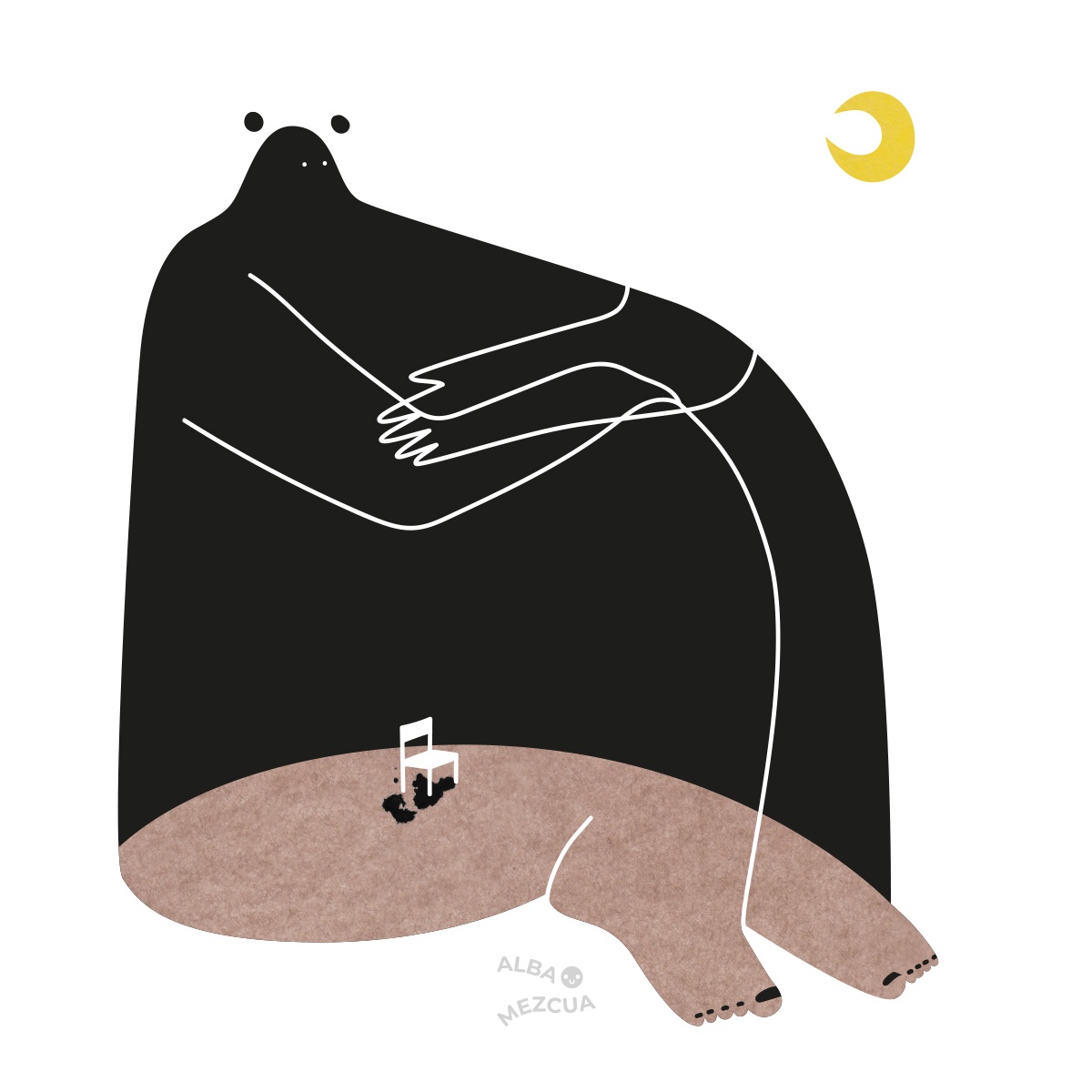Author: Sydney Sky
Art: Alba M
When Roseybeeme announced that she was “no longer body positive,” it wasn’t shocking, it was familiar. We’ve seen it before: influencers using the language and visibility of fat activism to grow a brand, then distancing themselves when it’s no longer convenient.
What struck me wasn’t a dramatic shift, but a confirmation. Rosey, like many others, had never truly aligned with fat politics. She’d borrowed the hashtags, aesthetics, and community, but kept the movement at arm’s length. Now, as she moves toward weight loss, she claims the movement’s history is unclear and its politics too rigid — as if the problem is the framework, not her performance of it.
This isn’t about personal choices. It’s about a repeated dynamic where fat liberation gets mined for content and discarded when the reality of the work demands more than branding. Fat people, especially those without proximity to celebrity, live with the consequences. That’s what this essay is about: tracking the pattern and calling it what it is.
Body positivity’s roots go back to the late 1960s and early 1970s, when two groups emerged: The National Association to Advance Fat Acceptance (NAAFA) and The Fat Underground. Their 1973 Fat Liberation Manifesto declared:
“We demand equal rights for fat people in all aspects of life… and an end to discrimination in employment, education, public facilities, and health services.”
NAAFA, founded by Bill Fabrey after witnessing his wife’s mistreatment, sought fat acceptance through education and advocacy; a mission it still holds today.
“Fat liberation gets mined for content and discarded when the reality of the work demands more than branding.”
But in California, queer feminists found NAAFA too conservative and unwilling to challenge dieting or medical systems. Sara Aldebaran, Judy Freespirit, and others formed The Fat Underground. They argued that society — not fat people — must change. Confrontational and unapologetic, they disrupted weight loss seminars and exposed medical violence. In 1975, Lynn Mabel Loes called weight loss surgery “mystified oppression,” condemning dangerous procedures. The group faded in the early 1980s but shaped decades of activism.
The 1980s and ’90s saw pockets of fat activism amid exploding diet culture. The ’80s was centered on gym culture and body obsession, exemplified in 1988 by Oprah Winfrey pulling a wagon of 67 pounds of fat onstage. In the ’90s, my mother had gastric bypass surgery, reflecting that era’s normalization of extreme body modification.
Then, the internet and social media shifted everything. Fat people connected, shared theory, built community, and organized globally. This visibility and resistance fueled modern body positivity.
Like Rose, a lot of us remember being on Tumblr in the 2010s, inspired by plus-size fashion and fat people looking genuinely stylish. It was the first time we saw fat women not just wearing clothes but styling them; loving fashion, feeling good. Many of us wore crop tops for the first time in our lives. That might not sound revolutionary now, but back then it was. This visibility shaped how we showed up for one another. For the first time in a long time, we had a spark of pride, community, and hope. Clothes are one of the few forms of self-expression that fat people are allowed, and for a while, it felt like we were finally getting a win.
Brands jumped on board. After the success of Savage Fenty, “inclusivity” became a marketing trend. But over time, aesthetics made daily anti-fatness seem like a self-esteem issue instead of a systemic harm. Advice boiled down to: “Just love yourself.” But self-love couldn’t protect us at the doctor’s office, at work, or in relationships.
“Body positivity, once a radical framework, was reduced to self-love mantras that didn’t hold up in real life.”
Many plus-size influencers performed alignment with body positivity but never fully took on its politics. It became branding — a clean, sellable aesthetic. Especially when “inclusivity” became profitable, body positivity grew into an industry: books, clothing lines, podcasts, and paid talks. For years, people have critiqued the branding choices of these companies. The faces of body positivity were always smaller-fat, hourglass-shaped, lighter-skinned or white, cis, and able-bodied. Who got the deals made it clear: this wasn’t about liberation, it was marketing.
Body positivity, once a radical framework, was reduced to self-love mantras that didn’t hold up in real life. It couldn’t contain the contradictions or push back against structural harm. It left behind the fat people it claimed to center.
In an era where people take diabetes medication (Ozempic) for weight loss, it’s easy to ignore the ableism and anti-fatness tied to both fatness and diabetes. Diabetes is weaponized to scare fat people into weight loss, even though weight loss isn’t a treatment. People use the threat of death to justify that pressure. Taking diabetes medication for weight loss while diabetics still fight for affordable access shows how weight loss isn’t just a personal choice but has a ripple effect. The harm touches people you don’t even know. That harm multiplies with a large platform. Expecting body positivity spaces to welcome intentional weight loss is violent. It ignores the larger, ongoing harm: people dying from dieting, eating disorders, and surgery. Body positivity was supposed to carry us out of that cycle.
This is why plus-size influencers are not the same as fat activists. One is a job about marketing and capital; the other is about change and collective survival. White influencers especially can move in and out of movements they don’t depend on. Fatphobia and the BMI system are built on anti-Blackness. Weight loss often creates distance from fat Black people. My mother, a Black woman, had gastric bypass in the ’90s and has had health complications ever since. Now more than ever, we need to help people step off the cycle of weight loss drugs and support those who take them to survive.
Too many plus-size influencers came and went through body positivity without ever thinking they needed a political stance. Fashion was treated as an isolated subject, separate from liberation — a way to hide from having to address internalized anti-fatness. Fat fashion is important and should be visible, but people need more than outfits and pictures. They need support, community, and structure to help them survive systemic anti-fatness.
For too long, body positivity has been a cash pit for companies and influencers. Many of us, especially those most marginalized, were left to fend for ourselves, despite being the ones who created the ideas that sparked the movement in the first place. If something doesn’t change, many will continue to be harmed by the current diet culture and anti-fat era of fascism. Publicly exiting body positivity doesn’t just signal individual disinterest, it promotes the collapse of politics entirely.
About the Author:
Sydney Sky is a Detroit-born writer, educator, and cultural critic based in Chicago. Her work centers on fat liberation, queerness, and intersectional social justice, with a focus on desirability politics, anti-fatness, and body positivity. She is currently writing a nonfiction book exploring polyamory and relationship ethics from a unique perspective. With a background in media criticism and jazz performance, she blends honesty and nuance to challenge cultural norms and amplify marginalized voices.
Find them here: Sydney Sky

